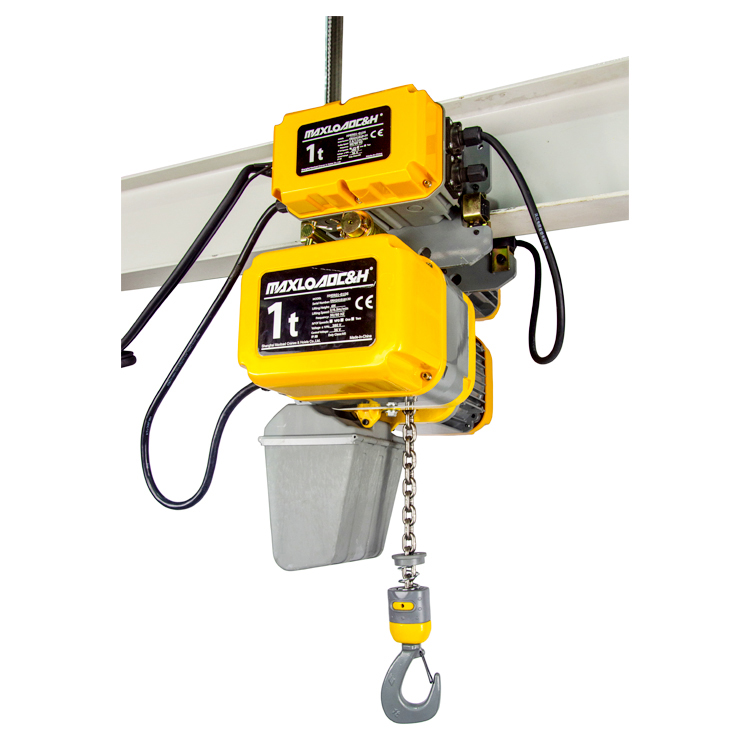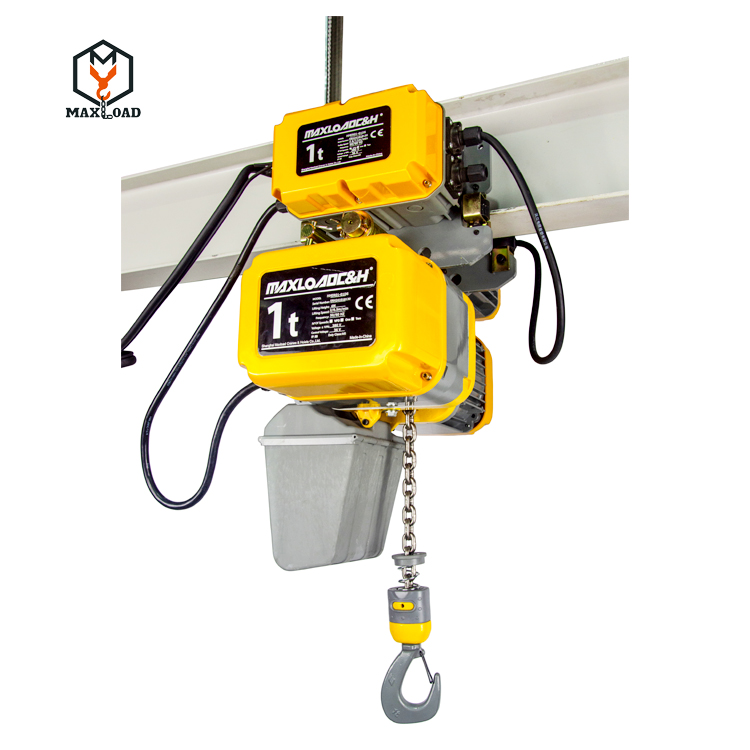Electric Hoists: The Backbone of Industrial Lifting
In modern industrial material handling systems, electric hoists, with their compact structure, flexible operation, and reliable performance, have become core lifting equipment across manufacturing, construction, logistics, and warehousing. These electric motor-driven mechanical devices, which lift and move heavy objects, are constantly reshaping the efficiency boundaries of industrial handling with technological advancements.
I. Core Structure and Operating Principle
The efficient operation of electric hoists relies on the coordinated operation of three major systems. The power system is centered around a conical rotor motor. The conical structure of its stator and rotor creates a unique braking mechanism. When power is applied, axial magnetic tension compresses the spring, releasing the friction plate. When power is removed, the spring returns to its original position, achieving mechanical locking, thus providing both driving and braking functions. Some models utilize a main and auxiliary motor to achieve fast and slow speed switching. In slow mode, the auxiliary motor drives the main motor's rotor to transmit power, meeting the requirements of precise operations.
The transmission system handles power conversion. The high-speed power output of the motor is reduced by a three-stage gear reducer before driving the drum through a hollow shaft. The drum lifts and lowers the load by winding a wire rope or chain. The chain drive's multi-link structure ensures efficiency and safety, while the wire rope's high-strength material adapts to the handling requirements of varying weights. Positioning sleeves and connecting sleeves ensure a precise connection between components, while bearings provide stable support for rotating parts, forming a tight mechanical transmission chain.
The control system is the core guarantee for safe operation. When the hook reaches the upper or lower limit, the flameout limiter, via a guide rod, forces the push-pull lever to disconnect power, preventing the risk of over-limit operation. A low-voltage control button and forward/reverse contactor control the direction, and some equipment uses solid-state relays to reduce the probability of failure. The overload protection device automatically disconnects power by monitoring load pressure, and multiple safety redundancies form a closed-loop protection loop.

II. Diverse Classification and Suitable Scenario
Electric hoists can be categorized into various types based on different dimensions to meet diverse needs. Based on the drive method, they are divided into two categories: electric and manual. The former, with its automation advantages, dominates industrial applications, while the latter is suitable for temporary operations without a power supply. Based on the lifting capacity, they can be categorized into light, medium, heavy, and extra-heavy types, corresponding to handling needs ranging from parts to large components. Different suspension methods determine their installation scenarios: cantilever types are suitable for operations in confined spaces, suspended types are suitable for crane main beams, and mobile types can be flexibly moved along rails. The distinction between single-beam and double-beam structures is even more specific: single-beam types are mounted on light cranes and serve material transfer in workshops, while double-beam types, with their strong load-bearing capacity, are particularly suited for heavy-duty operations such as docks and steel mills.
In manufacturing production lines, electric hoists handle component loading and unloading and equipment maintenance, ensuring production continuity. On construction sites, they enable vertical transportation and high-altitude positioning of rebar and formwork. In warehousing and logistics, they collaborate with racking and stacker cranes for efficient storage and retrieval of goods. For specialized environments, customized models with explosion-proof and high-temperature protection meet the stringent requirements of industries like the chemical and metallurgical industries.
III. Safety Standards and Maintenance Core
As specialized equipment, the safe operation of electric hoists requires standardized operation and regular maintenance. Before the operation, check the effectiveness of safety devices such as brakes and limiters. Overloading and tilting are strictly prohibited during operation. After stopping the hoist, ensure that the hook is in its original position and the power is disconnected. Daily maintenance priorities include regularly lubricating reducer gears, inspecting wire rope wear, and testing the brake system's sensitivity to ensure all components are in good condition.
The Chinese government has standardized product quality through standards such as the "Energy Efficiency Limits and Energy Efficiency Grades for Electric Hoists," requiring manufacturers to meet both safety and energy efficiency targets. required to maintain equipment records and implement regular inspections to prevent safety incidents caused by component aging. These standards and maintenance measures form the cornerstone of safe equipment operation.

IV. Technological Upgrades and Development Directions
In recent years, the electric hoist industry has shown a trend toward intelligentization and energy conservation. Variable frequency speed regulation technology enables precise control of lifting speed, wireless remote control systems eliminate operating distance limitations, and condition monitoring sensors provide real-time warnings of fault risks. Energy-saving motors reduce energy consumption, and lightweight designs improve space utilization while maintaining strength, adapting to the demands of compact production environments.
At the policy level, the "Made in China 2025" initiative is promoting the upgrading of lifting equipment, and local governments are supporting technological innovation through financial support and the development of industrial clusters. With the development of emerging industries such as new energy and high-end manufacturing, demand for specialized electric hoists continues to grow, and overseas markets are also becoming a new growth point for the industry. In the future, electric hoists will evolve towards being smarter, more efficient, and more environmentally friendly, and continue to empower the development of modern industry.



 0086 17717607077
0086 17717607077
 0086 (021) 5999 9072
0086 (021) 5999 9072
 market@chnhoist.com
market@chnhoist.com







